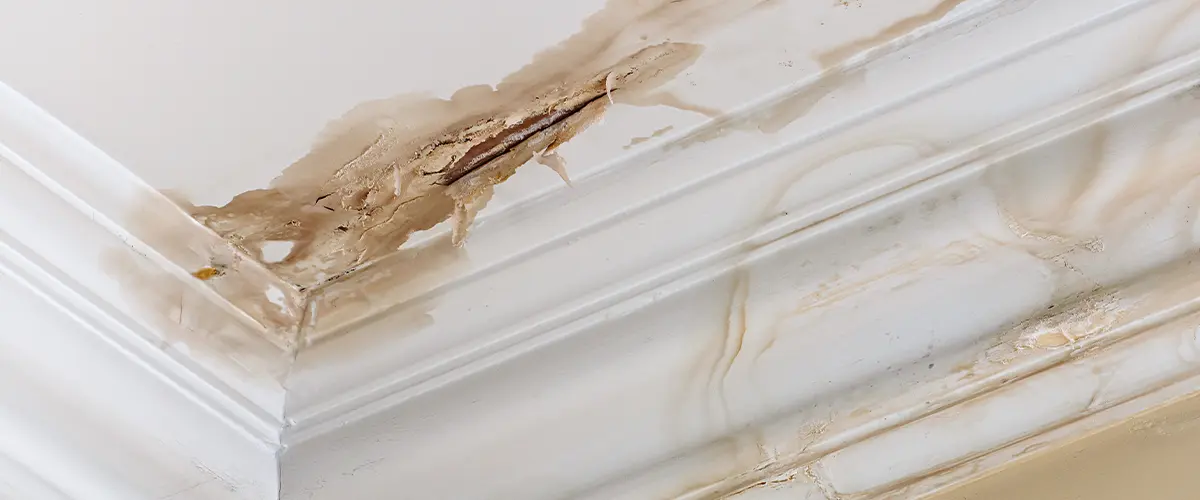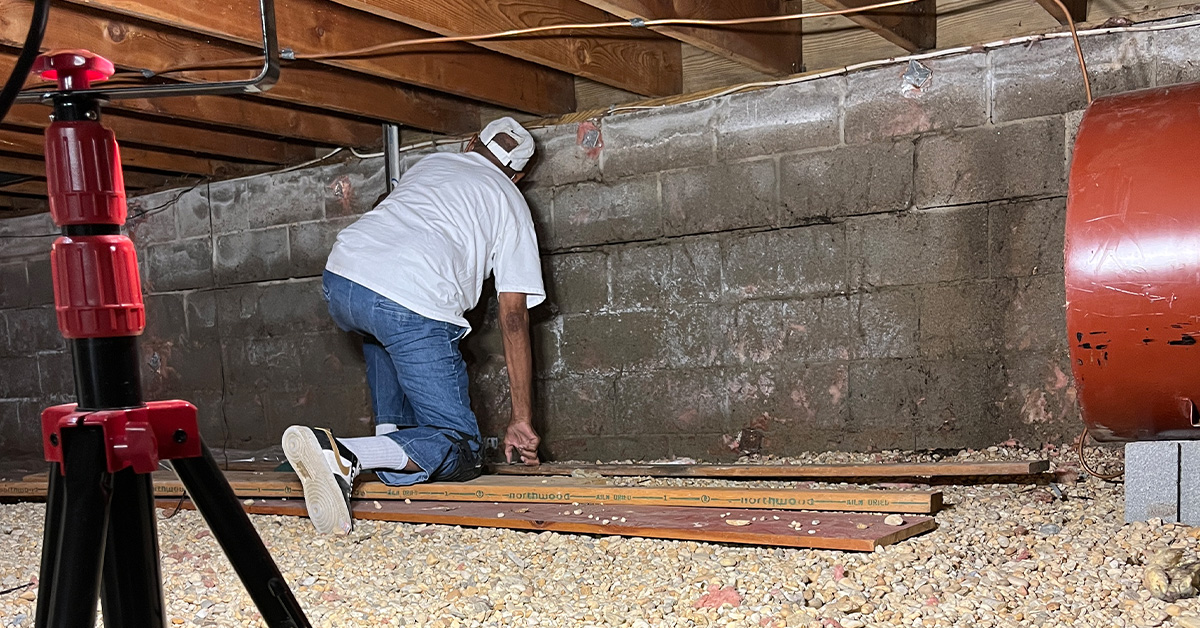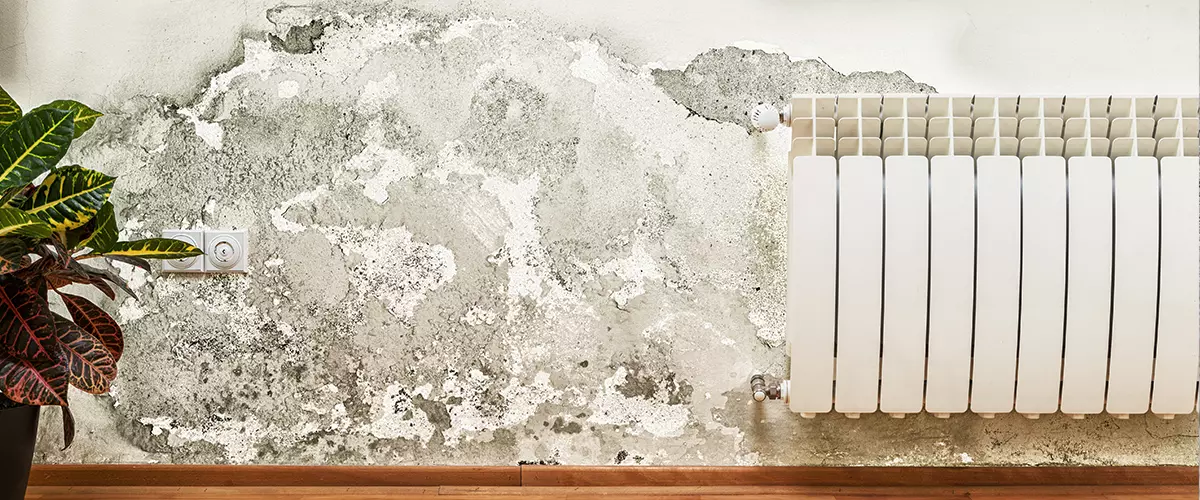Buying a new home is exciting and a long-term investment that you’d benefit from for a very long time. Ensuring its foundation and basement are in great condition is vital – and a foundation and basement inspection will show you if the place is worthy or not.
But we’ve noticed a lot of people don’t know what to look for when inspecting a basement.
Our detailed guide and downloadable checklist below will equip you with the know-how to identify potential issues such as sagging floors, settling foundations or growing mold, making sure your investment stands on solid ground.
So if you’re not 100% sure where you need to pay some extra attention when buying a new home, check out this guide.

Key Takeaways
- Visual Inspection First: Start with a thorough visual check for cracks, stains, mold, and pests.
- Water Stains Are Red Flags: Water stains signal potential foundation issues. Address them promptly.
- Assess Your Soil: Know your soil's composition and moisture levels for foundation stability.
- Inspect, Measure Cracks: Don't ignore cracks; measure them accurately to gauge severity.
- Prioritize Preventative Maintenance: Regular inspections and preventive measures are essential for a stable home foundation.
Foundation Inspection Tips
- Visual Inspection
Homeowners should kick-start their foundation inspection with a detailed visual examination. As part of this process, they scrutinize all accessible parts of the house’s structure and roof for visible issues like cracks, water stains, mold or pest damage.
More often than not, clues of serious problems lurk in plain sight and the keen eye can spot them before any tools are employed. Engineers specialized in home inspections follow the same protocol; beginning from the foundation and working upwards to cover each nook and cranny of your property.
Keeping track through an inspection report can be immensely helpful as it lists down potential repair points based on these initial findings.

- Check for Water Stains
Visible water stains often suggest foundation issues. These markings, usually yellow spots, can appear on walls and ceilings due to persistent water leakage or seepage. Large or small stains offer a reliable hint of an underlying problem which may lead to costly repairs if not addressed promptly.
While inspecting your basement for signs of water damage, pay close attention to wet spots and mold growth. A musty odor is another indicator of excessive dampness in your home’s lower level which could pose a potential threat down the line.
Groundworks can provide expert help during house inspections as well as preventive solutions for these damp concerns.

- Inspect the Foundation Footings
To ensure the structural integrity of your home, it’s essential to inspect foundation footings thoroughly. Foundation footings support and distribute the weight of your building evenly across the area of ground.
Begin by checking for any signs of cracks or shifts in these key elements; these might be indicative of ground instability or potential degradation over time. Follow guidelines set out by residential construction codes like the International Residential Code (IRC) to determine whether your house complies with all mandatory requirements pertaining to footing design and foundation inspection.
Regular examinations help maintain building support and prevent severe damage in future, preserving your peace of mind as a proud homeowner.
- Assess the Soil
Performing a robust soil analysis is necessary to ensure your foundation’s stability and longevity. This step involves evaluating the composition of your soil, determining its suitability for supporting heavy structures like home foundations.
Important factors in this examination may include the type and amount of clay or sand present, as well as moisture levels. Undertaking professional preconstruction soil inspection could save homeowners from future problems caused by extreme soil pressure that compromises the walls of their foundation.
Even before you start building or after building on it, continuous checks help maintain foundation wall health assuring durability over time.
- Examine the Foundation Interior
Venturing inside, your prime task is to scrutinize the foundation interior carefully. Do not ignore even the smallest cracks or fissures as they might indicate a larger underlying problem.
Locating uneven areas on foundation walls could suggest potential structural issues that may discreetly be affecting the home’s stability. Noticeable water stains often serve as silent proof of lingering moisture problems, so ensure any signs of such damage aren’t overlooked.
Lastly, maintain sharp attention towards signs of pest activity since this can result in significant foundational distress over time; looking out for these things helps in thorough home foundation inspection and basement condition assessment.

- Measure Cracks
Measuring cracks is a vital step in your foundation inspection. It’s important not to ignore even the smallest fractures, as they can be indicative of deeper structural issues that could lead to costly repairs if left unchecked.
Quick and accurate measurements give insight into the severity of potential foundation damage. Do this with a tape measure or depth gauge for more precise results.
Different types of cracks represent different forms of foundation settlement and possible structural integrity threats. For instance, horizontal cracks on basement foundations often indicate unbalanced soil pressure against the walls.
Similarly, stair-step and vertical fractures found during crawl space inspections might suggest shifting or movement in your home’s underlying structure due to changes in soil conditions over time.
- Look for Bowing or Tilting
A significant number of foundation issues arise from bowing or tilting walls. These signs, if spotted early on during your inspection, can help you avoid costly repairs in the future.
Frequent shifting soils often trigger these issues. Look at the vertical and horizontal lines of your foundation—ideally, they should be straight with no signs of bulging or leaning in any direction.
Noticeable curves or inclines could indicate a problem that needs immediate attention to prevent further displacement due to moisture in the soil or other conditions causing pressure on the wall.
When encountered with such scenarios, it’s crucial to have a professional handle this for an accurate assessment as well as suggest proper remedial actions promptly for damage prevention.
- Inspect Foundation Joints
A thorough examination of foundation joints forms a significant part of the foundation inspection. These joints are prone to visible damage such as cracks, spalling, bowing walls, leanings, and deteriorated mortar.
Foundation joint problems often hint at an unstable structure. Foundation repair contractors usually start their assessments from these junctures due to their susceptibility to expose masonry damage.
The technique involves looking for any signs of issues in and around joint areas which could potentially weaken your home’s base over time.
Ensuring safety isn’t just limited to pest or water damages; physical aspects like these form the core strength of your dwelling too! Hence it is extremely vital that you don’t overlook such checks during routine inspections and proactively act on inconsistencies if any.
- Check for Pest Damage
The presence of pests can wreak havoc on your property, silently damaging the foundation. Termites, in particular, are notorious for causing severe harm to wooden structures and cement foundations often unnoticed until it’s too late.
Pest damage isn’t always apparent during a routine home inspection. Discolored cement and warped drywall might indicate moisture issues linked to a pest invasion. Therefore, detailed scrutiny for signs of termite or other insect activity should make an essential part of your foundation checks
Reinforcing window seals helps deter potential pest entry points while simultaneously preventing added dampness from seeping into your house structure—an enemy that fuels growths like mold and mildew thereby weakening the building’s integrity further along with attracting more pests.
- Check for Mold and Mildew
Mold and mildew thrive in damp environments, making your home’s foundation a tempting target. Proper drainage is critical to keeping these unwelcome guests at bay. Ensure that rainwater flows safely away from your house to prevent these unwanted growths.
Detecting mold and mildew isn’t always obvious – some types blend into the surroundings while others grow hidden behind surfaces. Regular surface moisture checks can help identify potential problems before they escalate into major issues affecting both building upkeep and home safety.
Known hazards of certain mold types underscore the importance of swift detection and removal. Consistently applying prevention methods will keep your environment healthy, helping all occupants breathe easier as part of a comprehensive foundation maintenance strategy.

Conclusion
To enhance accuracy during routine foundation and basement inspections, consider having an expert perform occasional reviews on your property. After all, your health and the structural stability of your home should always be prioritized above everything else.
Performing a thorough foundation and basement inspection ensures your new home is safe and durable. This checklist will guide you through the key aspects of successful inspections.
If you’d rather have an expert check on your new home, give us a call at (202) 389-9121 or request a free quote, and we’ll be more than happy to assist you.
